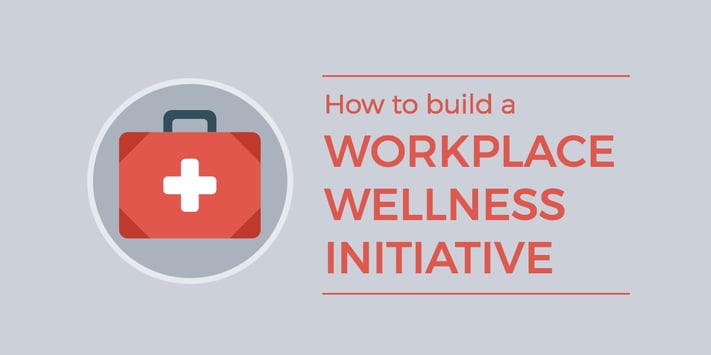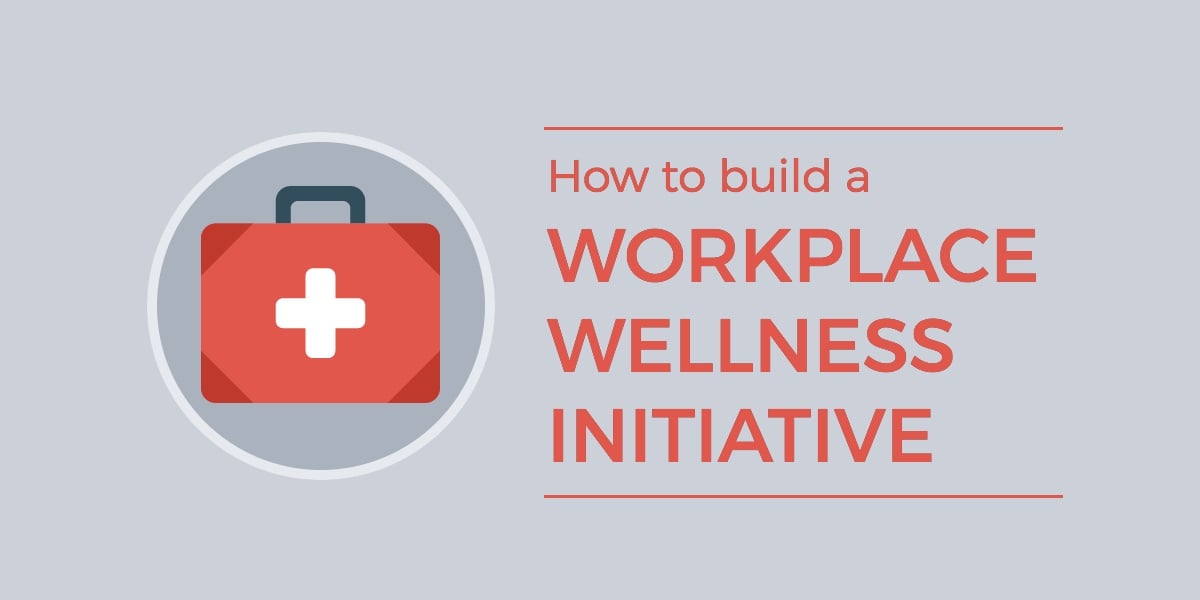
Wellness programs have steadily grown in popularity in the last few years. According to a 2015 study by SHRM, 80% of all employers offer some form of preventative wellness services and information to their employees. These programs are even more popular in larger organizations; 92% of employers with 200 or more employees offer a wellness program.
The benefits of adopting a wellness initiative can include higher employee engagement, lowered healthcare costs, and a reduction in absenteeism due to illness. If your organization doesn’t have a program in place, or if you’re considering expanding it in 2017, here are some examples of the kinds of supports to consider implementing.
Encouraging activity
Aside from health screenings, this type of benefit is probably the most commonly included in a corporate wellness program. Many Silicon Valley tech companies (who always lead the rest of corporate America in terms of adopting employee benefits) provide personal training or onsite gyms for their workforce. While this is cost-prohibitive for most companies, there are still some ways to encourage your employees to move more.
One option is to negotiate group rates on gym memberships or subsidize memberships to fitness studios. Reducing this cost removes one barrier to your staff’s ability to work out. If you have a big enough open space at your workplace (or a nearby park), you can also consider hiring or inviting fitness instructors from nearby gyms or studios to teach classes on-site occasionally.
Yoga in particular can be a great activity to encourage for employees, as it is adaptable to many fitness levels and also provides stress relief benefits. If you have employees who are interested in becoming certified to teach yoga, consider sponsoring their certification course in exchange for one agreeing to teach one or two community classes per week for their colleagues before or after work.
Walking and biking can be great for employees’ mental and physical health at the same time. If you live close to areas where many of your employees work, you can also consider provide incentives for staff who choose to bike or walk to work. Ensure there are plentiful bike racks for employees who take you up on this offer. Some employers choose to provide wearables or pedometers to help employees track their steps, or to use in activity contests.
Nutritional support
Providing some sort of nutritional component to a wellness program is another strong option for many employers. While not many companies are able to provide an onsite chef or daily healthy catered lunches, there are still several key ways to encourage healthy nutrition for your staff.
One easy item to check off your list: change the vending machine options. When employees hit the afternoon slump and decide they need a snack, they often turn to any vending machines at their workplaces. Even a health-conscious person when faced with crashing energy might reach for a candy bar or bag of greasy chips in this situation. Talk to your vending machine supplier about stocking the machines with healthier options like pretzels, jerky, or fruit leather.
Another key component of healthy nutrition is adequate hydration, which can increase mental acuity and alertness, among other benefits. You can encourage employees to drink plenty of water by providing nice reusable water bottles to every person on staff and ensuring there are plenty of water fountains around your workplace. If your workplace thrives on competition, consider developing a contest where employees track how much water they drink (there are some fun mobile apps for this, too).
If your company is really serious about encouraging wise nutritional choices by your staff, however, consider providing regular access to a nutritionist. Ideally this benefit would be onsite, but it should certainly be easily accessible and affordable (if not free) for employees. Professional support is a valuable resource when changing eating habits.
Preventative health
Commonly this kind of initiative takes the form of providing health screenings. This benefit is a good starting point, but it’s not nearly sufficient. In fact, for those employees who are aware they’re in poor physical shape, this kind of activity might only serve to discourage them. If you’re using health screenings, make sure you provide nutritional and fitness support along with them, and that your company leadership makes concrete efforts to adapt the workplace culture to encourage healthy behavior.
Another popular preventative health benefit is smoking cessation support. The health effects of smoking are so commonly known that employers should jump at the chance to help employees quit. Providing access to coaching and support groups, along with pharmacological assistance where appropriate, can help employees kick the habit and improve their well-being significantly.
Lastly, if your workplace does not provide easy access to flu shots, you should consider adopting that as an annual benefit. Most health insurance plans cover the cost of flu shots,but if yours doesn’t, it’s still likely worthwhile to build the cost of inoculating all interested employees into your budget. The lost productivity that comes with flu season would certainly cost you more than paying for shots. If possible, provide a flu shot clinic on-site for one day every year for the convenience of your staff.
General well-being and stress reduction
A wellness initiative should not only focus on physical health, but also mental and emotional health. Managing stress is a challenge for most modern workers, and the workplace can be a major contributor to this problem. In order to get the best out of employees, it’s crucial for corporate cultures to provide opportunities for stress relief and strong social connections.
Emphasize strong social and community connections among your employees whenever possible. You can do this by facilitating regular volunteer opportunities in the community; ask your employees for input about which organizations matter to them. It’s also a good idea to sponsor occasional social events (like happy hours, picnics, recreational sports games, etc.) outside of office hours to help employees to get to know each other better.
Lastly, since financial stress is a major factor for many people, providing proactive support in that area can be helpful. This can take the form of financial counseling, access to retirement advisors, or student loan repayment assistance. These benefits are not commonly thought of as contributing to an overall wellness programs, but they can significantly improve your employees’ outlook and quality of life.
A caveat
While it’s wise to adopt a wellness initiative, it’s important that company leaders approach it with the correct mindset. These activities have to be adopted on a long-term basis as part of a shift in the corporate culture toward better overall health.
According to a Harvard Business Review study on corporate wellness plans, “...wellness initiatives won’t work if your culture hasn’t shifted to support long-term adoption of healthy behaviors. Short-term contests like Biggest Loser competitions in the workplace don’t produce lasting results for employees.”
Furthermore, if your workplace is overly competitive or insular, or rewards employees who have an unhealthy attachment to their work at the expense of a healthy personal life, those aspects of the office culture will have to be addressed first in order for any kind of health improvement program to work. Creating a culture where employees’ mental, emotional, and physical well-being are prioritized requires a sustainable attitude toward work and a supportive corporate environment.
